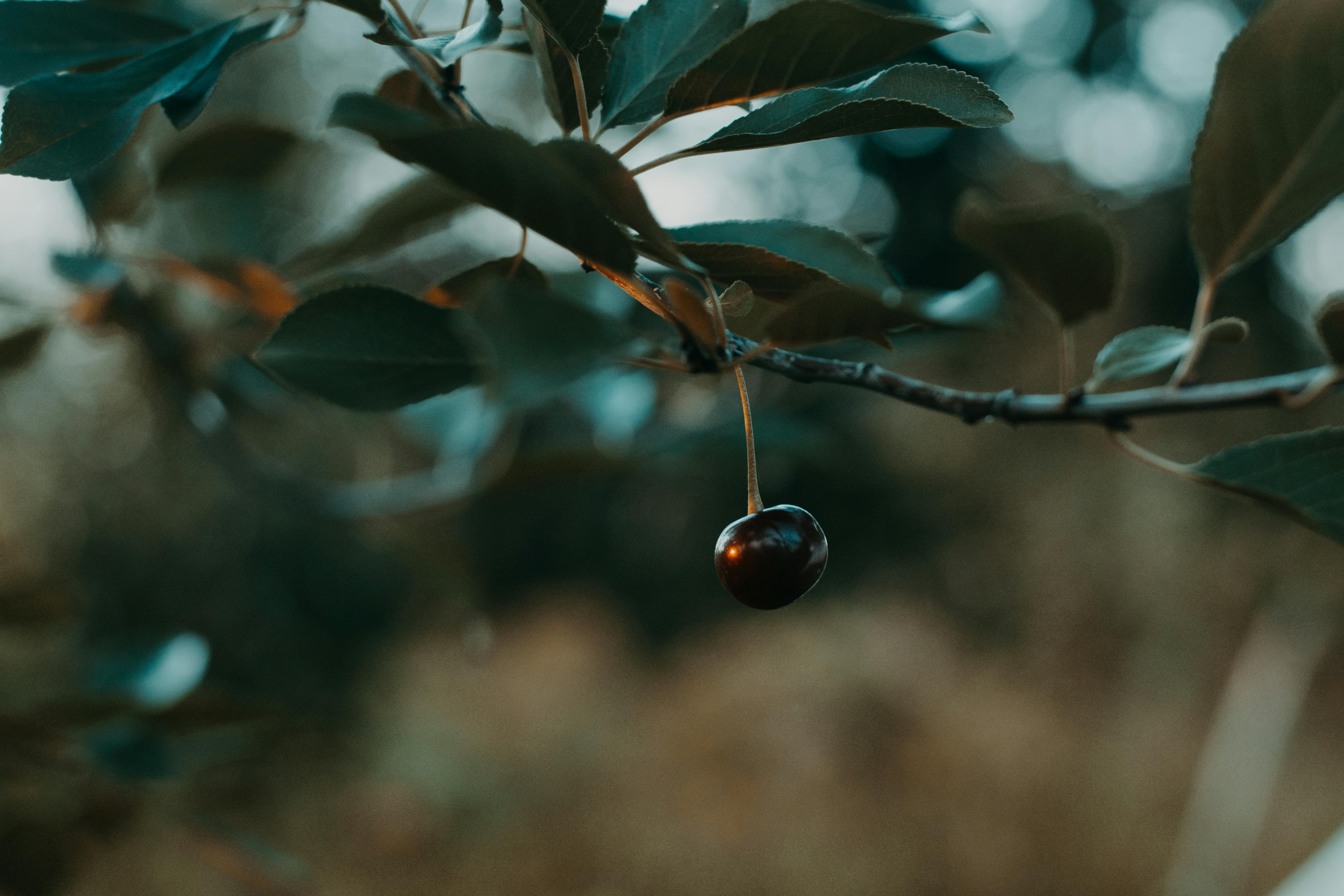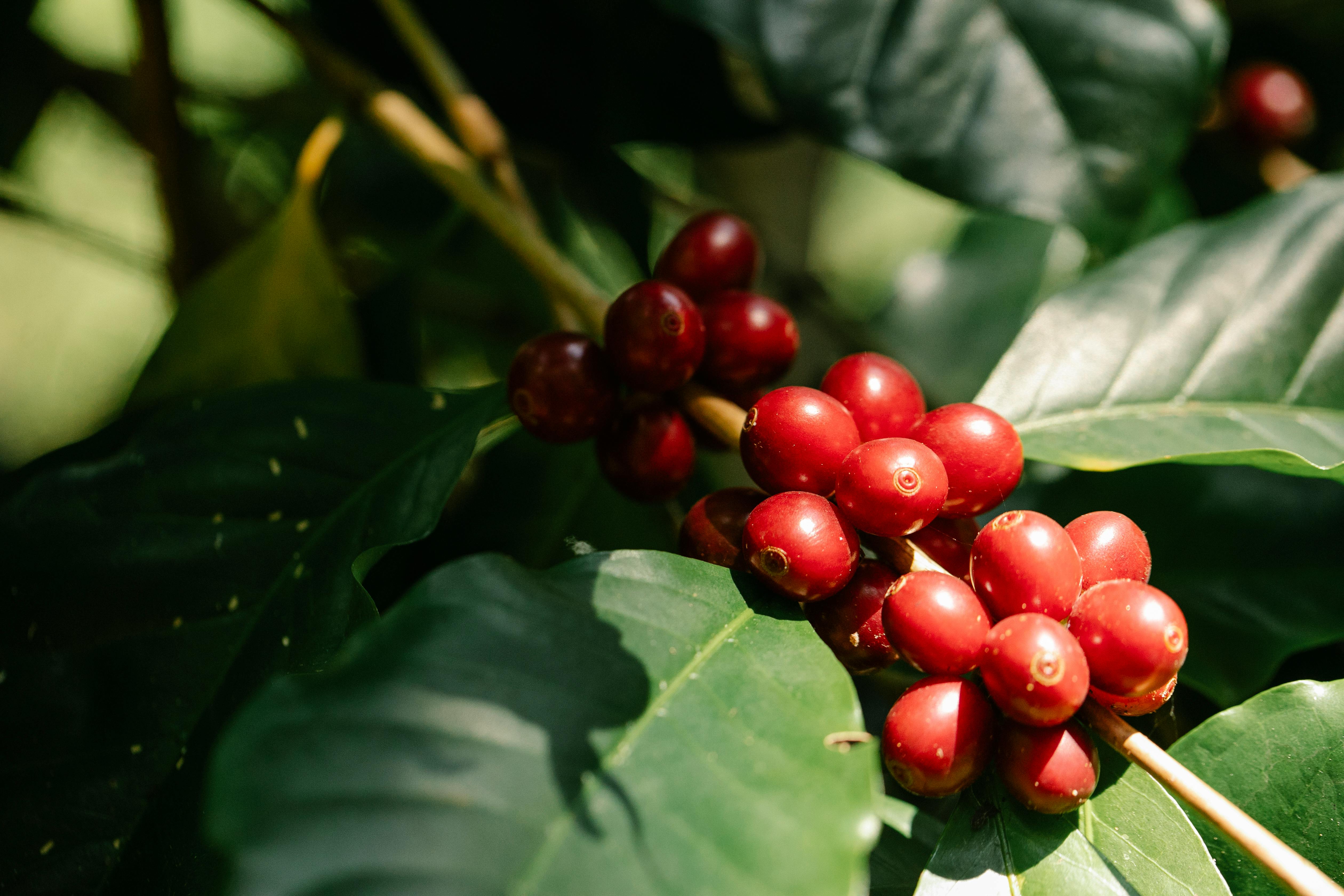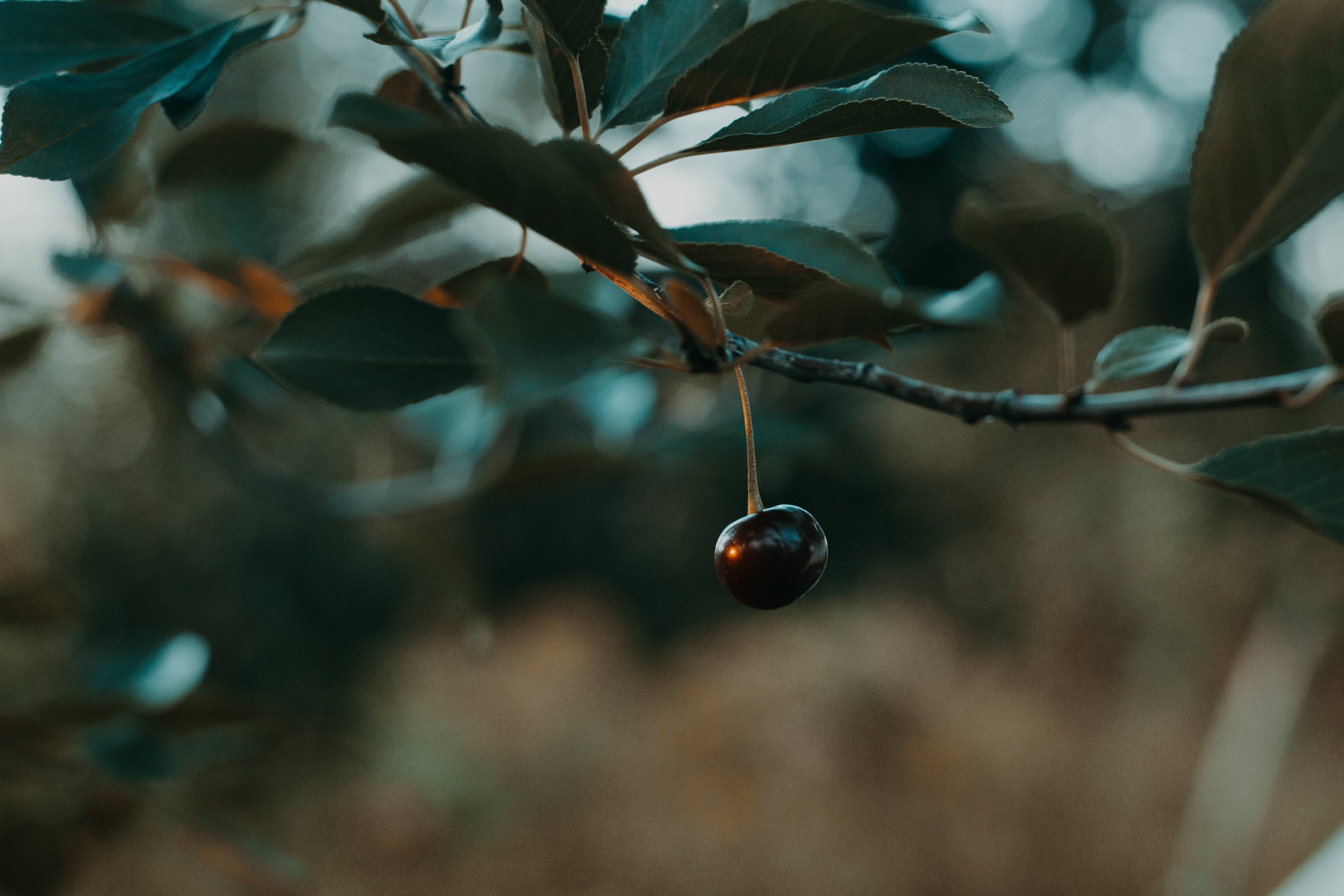Cherry trees are known for their fragrant blossoms and delicious fruits, and many gardeners are interested in knowing how long it takes for a cherry tree to bear fruit. The exact amount of time can vary depending on the type of cherry tree, but generally it takes between two to five years before a cherry tree will produce its first fruits. In this article, we will explore the factors that affect how long it takes for a cherry tree to bear fruit, as well as tips for helping your tree produce fruit sooner.It typically takes a cherry tree 3-4 years to bear fruit. During this time, the tree will need to be properly cared for in order to produce a good harvest.
Environmental Factors
The amount of sunlight, air temperature, and soil conditions are all environmental factors that can affect the time it takes for a cherry tree to bear fruit. Adequate sunlight is necessary for photosynthesis, which is the process by which plants convert light energy into chemical energy. If a cherry tree does not receive enough light, it may take longer for it to produce fruit. Temperature also plays an important role in the growth and development of a cherry tree. In areas with cooler climates, it may take longer for the tree to reach maturity and bear fruit than in warmer climates. Soil conditions can also affect the health of a cherry tree and its ability to produce fruit in a timely manner. Poor soil quality can lead to nutrient deficiencies that can slow down growth and fruiting times.
Variety
The variety of cherry tree being grown is also an important factor that affects the time it takes for it to bear fruit. Some varieties are more productive than others and may bear fruit more quickly than others. Certain varieties are better suited to certain climates or soil types, which can affect their growth rate and fruiting times. Additionally, some varieties require pollination from another variety of cherry tree in order to produce fruit, which can add additional time before the first harvest.
Age
The age of a cherry tree is another factor that affects how long it will take for it to bear fruit. Generally speaking, younger trees will take longer to reach maturity than older trees. It typically takes 3-5 years for a cherry tree to reach full maturity and begin bearing fruit regularly. Additionally, the older a tree gets, the less productive it will be over time as its growth rate slows down.
Care
Proper care is essential when trying to get a cherry tree to bear fruit in a timely manner. Trees need adequate water during their growing season in order to remain healthy and productive. Proper pruning techniques should also be employed in order to promote healthy growth and encourage larger harvests each year. Additionally, fertilizers should be used sparingly as too much fertilizer can cause excessive foliage growth at the expense of flower production and fruiting times.
Different Varieties of Cherry Trees and their Fruiting Times
Cherry trees are popular ornamental trees that are sought after for their colorful, fragrant blooms that occur in the springtime. They are also known for their delicious fruit which can be harvested in late summer or early autumn. There are many different varieties of cherry trees and each one has its own unique fruiting time.
The sweet cherry tree is the most popular variety and is often used in home gardens to produce delicious cherries for eating. These trees produce fruits from June to July. The fruit is bright red and has a sweet, juicy flavor.
The sour cherry tree produces tart fruit that can be used for baking or cooking purposes. These trees typically produce fruits from late June to early August. The cherries on these trees tend to be small, but they make up for it with their intense flavor.
The dwarf cherry tree is a smaller variety of the cherry tree that produces smaller fruits than other varieties. These trees usually fruit from mid-July through August and produce larger cherries than other varieties. The fruits of this type of tree have a sweeter taste than the other varieties as well.
Finally, there is the bush cherry tree which produces smaller, round fruits with a tart flavor that can be used for preserves or pies. They typically flower in late May and the fruit ripens from mid-July through August.
No matter which type of cherry tree you choose, they can all provide you with delicious fresh fruit during the summer months when other types of fruit may not be available. With careful selection, you can enjoy your own homegrown cherries without having to purchase them from the store!
Location
Choosing the right location for your cherry tree is essential for its growth and productivity. Cherry trees require full sun to partial shade, and need to be placed in an area with good air circulation. Avoid planting in windy or low-lying areas, as this can cause the fruit to ripen unevenly and can lead to disease. When selecting a spot, make sure there is enough room for the tree to reach its maximum height of 20-30 feet.
Soil
Cherry trees prefer well-drained soil that is neutral in pH, with a range of 6.5-7.5 being ideal. Before planting, test the soil to determine if it needs any amendments such as compost or manure. If the soil is too acidic, add lime or wood ash to raise the pH level. If it is too alkaline, use sulfur or iron sulfate to lower the pH level.
Water
Cherry trees need regular watering during dry spells and periods of drought. During their first year of growth, they should be watered every 7-10 days during the growing season (spring and summer). In subsequent years, water weekly if there has been no rainfall for at least two weeks during the growing season.
Fertilizer
Fertilizing your cherry tree twice a year (in spring and fall) will help ensure it has all the nutrients it needs for healthy growth and production of fruit. Use a balanced fertilizer such as 10-10-10 at a rate of 1 pound per 100 square feet of soil surface area around the tree’s drip line (the edge of its canopy). Avoid overfertilizing as this can lead to excessive vegetative growth at the expense of fruit production.
Pruning
Pruning your cherry tree each year will help keep it healthy and productive by removing dead or diseased branches, improving air circulation, encouraging new growth and allowing light into the interior portions of the canopy. Prune your cherry tree in late winter while it is still dormant; avoid pruning during summer as this can increase susceptibility to fungal diseases such as brown rot.
What Conditions are Best for Growing Cherry Trees?
Cherry trees thrive in areas with full sun and moist, well-drained soil. They prefer cooler climates but can also grow in warmer regions. When planting, it’s important to consider the type of soil and climate that your tree will be growing in as this will affect its growth and health.
It’s best to plant cherry trees in early spring when the ground is soft. Avoid planting during times of drought or extreme heat. The soil should be kept moist but not waterlogged, so ensure that you water regularly during dry periods. Adding a layer of mulch can help retain moisture and prevent weeds from competing for nutrients.
Cherry trees prefer slightly acidic soil with a pH level between 5.5 and 6.5. If your soil is too alkaline, you can add sulfur or compost to lower the pH level before planting your tree. Additionally, if you have clay-based soil, adding organic matter such as compost will help improve drainage and aeration.
Fertilizing your cherry tree once a year is recommended to encourage healthy growth and abundant fruit production. Choose a fertilizer designed specifically for fruit trees and follow the instructions on the packaging for best results.
Proper pruning is essential for keeping your cherry tree healthy and productive over time. Pruning helps regulate growth, encourages flowering, prevents disease, improves air circulation, and promotes fruiting. Prune your tree in late winter or early spring before buds appear using sharp pruning shears or loppers to make clean cuts at the branch collar (the swollen area near where the branch meets the trunk).
By taking care to provide your cherry tree with proper conditions such as full sun, moist soil, balanced pH levels, regular watering, mulching, fertilizing, and pruning it will grow healthy and strong with an abundance of delicious cherries!

Choosing the Right Variety
When planting a cherry tree, it is important to choose the right variety for your climate. There are two main types of cherries – sweet cherries and sour cherries. Sweet cherries need warm climates and are best suited for areas such as California and the Mediterranean. Sour cherries, on the other hand, thrive in cooler climates and do well in places like Michigan and New York. Once you have chosen a variety that is suitable for your climate, you will need to decide if you want a self-pollinating or cross-pollinating tree. Self-pollinating trees require less space but may produce less fruit than cross-pollinating trees.
Preparing the Soil
Once you have chosen your variety of cherry tree, it is important to prepare the soil before planting. The soil should be well drained and rich in organic matter such as compost or manure. If necessary, it can be amended with sand or organic matter to improve drainage and increase fertility. It is also important to check the pH level of the soil as most cherry trees prefer a slightly acidic soil with a pH level between 6 and 7.
Planting Your Tree
When planting your cherry tree, make sure that you dig a hole that is at least twice as wide as the root ball of your tree but no deeper than the root ball itself. Once the hole is dug, place some compost or aged manure at the bottom to improve fertility and then gently place your tree in the hole. Make sure that it is firmly planted in place then cover with soil ensuring all roots are covered. Water thoroughly after planting to ensure that your tree has enough moisture for its initial growth period.
Fertilizing Your Tree
Fertilizing will help ensure maximum fruiting from your cherry tree so make sure that you fertilize regularly during its growth period (usually from early spring until late summer). It is best to use an organic fertilizer such as composted manure or an organic liquid fertilizer formulated specifically for fruit trees. Apply fertilizer according to label directions and water thoroughly after application to ensure that nutrients reach the roots of your cherry tree.
Pruning Your Tree
Pruning is an important step in ensuring maximum fruiting from your cherry tree so make sure that you prune it regularly during its growth period (usually from late winter until early summer). Pruning should be done carefully so as not to damage any branches or buds; however, removing any dead or diseased branches should be done promptly for optimal health of your tree. Pruning can also help increase air circulation which can help reduce instances of disease in your cherry tree.
Pruning Your Cherry Tree
Pruning your cherry tree is an important part of caring for it. Pruning should be done at least once a year, preferably in the winter before the growing season begins. It is important to prune your cherry tree in order to ensure that it grows healthy and strong. Pruning encourages new growth, which helps the tree produce more fruit. You should remove any dead or damaged branches as well as any suckers or watersprouts. You can also thin out any overcrowded branches, and remove any branches that are growing in the wrong direction. Be sure to use sharp pruning shears and make clean cuts so you don’t damage the tree.
Fertilizing Your Cherry Tree
Fertilizing your cherry tree is also important for its health and growth. You can use a balanced fertilizer that is specially formulated for fruit trees, which will provide all of the essential nutrients that your cherry tree needs. Follow the directions on the packaging regarding how much fertilizer to use and when to apply it, as this will vary depending on your type of soil and climate. Fertilizers should be applied in early spring before new growth begins.
Watering Your Cherry Tree
Your cherry tree will also need to be watered regularly throughout its growing season. It’s best to water deeply rather than frequently, so try to give your tree a deep watering once a week during dry spells. Be sure not to overwater your cherry tree, as this can lead to root rot or fungal diseases like powdery mildew. Also keep an eye out for signs of drought stress such as yellowing leaves or wilting branches.
Protecting Your Cherry Tree from Pests and Diseases
In order to keep your cherry tree healthy and productive, you should also inspect it regularly for signs of pests or diseases. Common pests include aphids, scale insects, mites, and caterpillars; common diseases include brown rot and black knot fungus. If you notice any signs of pests or diseases on your cherry tree, you should take steps to control them right away using either natural methods or chemical treatments.
By following these tips you can help ensure that your cherry tree remains healthy and productive for years to come!
Common Diseases in Cherry Trees
Cherry trees are susceptible to several diseases, including bacterial canker, brown rot, powdery mildew, and leaf spot. Bacterial canker is caused by the bacterium Pseudomonas syringae and is one of the most destructive diseases of cherries. It causes lesions on the bark and twigs that can girdle and kill branches. Brown rot is a fungal disease caused by Monilinia fructicola that affects both the fruit and twigs of cherry trees. Symptoms include brown spots on the fruit and wilting or discolored leaves on affected branches. Powdery mildew is another fungal disease caused by Podosphaera clandestina that causes white patches of fungi to form on the leaves and stems of cherry trees. Leaf spot is a fungal disease caused by Blumeriella jaapii that affects both the leaves and fruit of cherry trees. Symptoms include dark spots or lesions on the leaves, twigs, or fruit.
In order to prevent or reduce damage from these diseases, it is important to practice good cultural practices such as proper pruning, thinning, and fertilization as well as regular monitoring for signs of infestation or infection. If signs of disease are present, it is important to contact a certified arborist for diagnosis and treatment recommendations. Additionally, proper sanitation practices such as removing and disposing of fallen fruit and debris from around the tree can help reduce disease spread.

Conclusion
Cherry trees can bear fruit in as little as three years after planting, depending on the variety. When grown in optimal conditions, cherry trees can live and bear fruit for up to 40 years. The type of soil, rootstock, climate, and pruning methods all influence the growth and health of cherry trees. Properly caring for a cherry tree will ensure it bears fruit for many years.
Keeping a cherry tree healthy requires regular watering and mulching, as well as pruning to encourage growth and prevent disease. Fertilizing is also important to ensure a healthy crop of cherries each season. Gardeners should also be aware of pests that may attack their cherry tree and take steps to deal with them effectively.
With the right care, a cherry tree can become a valuable addition to any garden or orchard for many years to come. Whether you’re growing cherries for their fruit or simply enjoying their beauty, having one in your yard is sure to bring pleasure each and every year!



